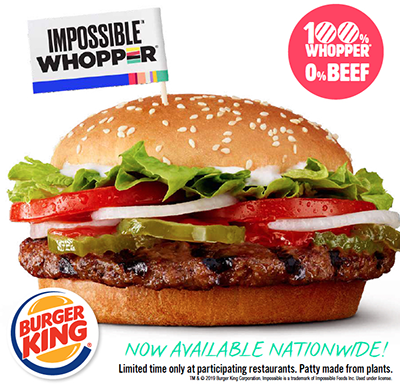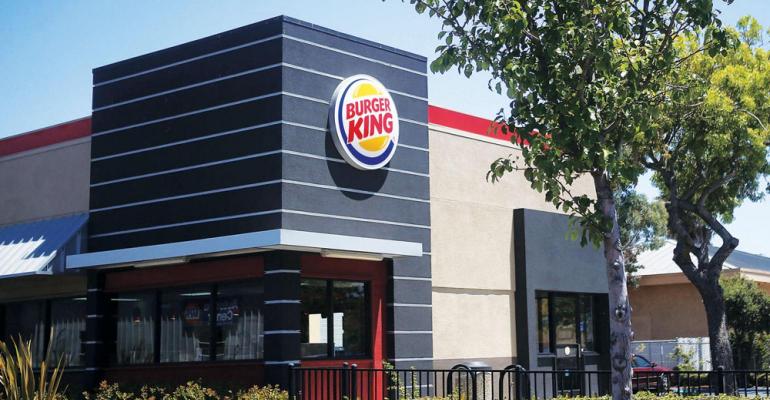Strong sales gains at Burger King, whose creative agency recently won a prestigious award for its edgy “Whopper Detour” ad campaign, lifted sales at parent company Restaurant Brands International, according to earnings released Friday.
The Toronto-based parent of Burger King, Tim Hortons and Popeyes Louisiana Kitchen, reported 7.9% growth in global systemwide sales for the second quarter ended June 30. Much of that gain was driven by a near 10% growth in sales at Burger King, which plans to accelerate the closure of low-volume stores in the U.S.
Global same-store sales at Burger King increased 3.6%, compared to a 1.8% gain last year. The strongest performing markets were China, India, Brazil and Spain.
In the U.S., however, the chain reported a 0.5% increase in same-store sales. José Cil, CEO of RBI, said consumers responded well to new items such as the Chicken Parmesan Sandwich and a Double Whopper promotion, but the burger chain was hurt in the quarter by not offering a proper value item.
 “We know that the best way to grow our business is a balanced core premium and value offering that caters to all guests and it seems that we did not have strong enough offers and messaging throughout most of the quarter,” Cil said.
“We know that the best way to grow our business is a balanced core premium and value offering that caters to all guests and it seems that we did not have strong enough offers and messaging throughout most of the quarter,” Cil said.
The company pivoted in July by offering dollar tacos, for which early results are encouraging, he said.
Cil said he’s also optimistic about improving third quarter results in the U.S. with the national launch next week of the Impossible Whopper — the brand’s classic burger made with a plant-based patty by Impossible Foods.
In test markets where the plant-based burger was served, Cil said the vegan entree was attracting both “new guests as well, younger guests.”
“So we feel really good about the potential that this platform has for Burger King,” he said.
The company is also working with franchise partners in the U.S. to close lower volume restaurants and replace them with modern “Burger King of Tomorrow restaurants that generate significantly higher average sales,” Cil said.
The CEO did not elaborate on how many stores the brand plans to close and replace. Pizza Hut made a similar move Thursday.
However, at an investment conference held in mid-May, Chris Finazzo, Burger King President, Americas, said the brand has plans to “prune” older low-quality restaurants and replace them with newer restaurants.
Over the past couple of years, the brand has closed about 130 to 150 underperforming restaurants each year. In 2018, the company opened more than 200 new restaurants and closed about 100 units.
Going forward, Finazzo said the brand plans to accelerate closure of low-volume stores that are less profitable.
“Over the next two years, we expect to close more like 200 to 250,” he said in May. “Ultimately, this is very good for the system as the low-volume restaurants we’re closing are being offset by new Burger King of Tomorrow restaurants.”
Overall, RBI has said that new store growth is a priority. In May, the company said it planned to increase its footprint from about 26,000 restaurants to more than 40,000 restaurants globally over the next eight to 10 years.
On delivery in the U.S., Josh Kobza, chief operating officer at Burger King, told analysts on Friday that the brand is poised to expand the service by adding new third-party partners. Currently, 3,500 restaurants offer delivery through Uber Eats. Burger King has 7,330 restaurants in the U.S.
Coverage will grow within the next few months and is expected to drive incremental sales, especially at dinner and late-night dayparts.
Same-store sales at Tim Hortons inched up 0.5 % for the quarter.
The chain was hurt by softness at lunch, where sales of sandwiches and wraps were down compared to last year. Cold beverage sales were also down.
The chain tried to reinvigorate sales by introducing a value chicken sandwich.
“But [its] performance fell short of the volumes we expected,” Cil said.
“We're taking steps to address this part of the menu with a variety of new innovation and continue to believe this represents a good opportunity for growth for the brand,” Cil said.
Cil said the company is focused on key areas to drive long-term growth, including the continued rollout of the brand’s new “Welcome Image” store design, trendy product innovations, improvements to its coffee program and increasing enrollment of its new loyalty program.
For the quarter, same-store sales at Popeyes grew 3% globally and 2.9% in the U.S.
Test markets saw positive results from the rollout of a new chicken sandwich, which is expected to go national later this year.
RBI revenue for the quarter was $1.4 billion, up from $1.3 billion in the same period last year. The company reported net income of $331 million, or 71 cents per share, compared to $313 million, or 66 cents per share.
At the end of the quarter, global restaurant counts were 18,008 for Burger King, 4,872 for Tim Hortons and 3,156 for Popeyes.
Contact Nancy Luna at [email protected]
Follow her on Twitter: @fastfoodmaven





